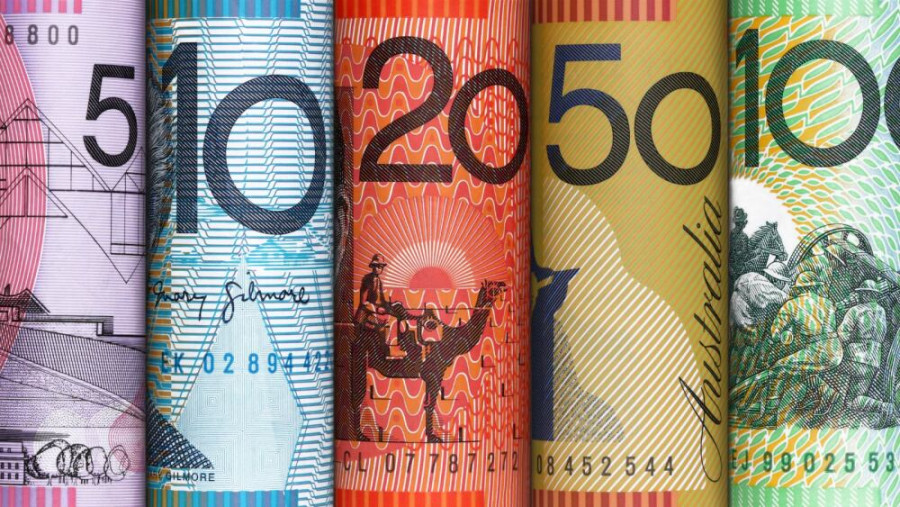The Australian dollar has been actively declining against the U.S. dollar for the second consecutive week, amid a simultaneous strengthening of the greenback and weakening of the Aussie. The AUD/USD pair is falling on growing expectations that the RBA will cut the interest rate by 25 basis points at its upcoming meeting on August 12, due to a weakening economy and slowing inflation. Although the RBA governor in her last speech highlighted the positive aspects of the "Australian Nonfarm" report, the overall tone remains dovish. Wednesday's release may be the final piece of the puzzle—especially if the key components fall into the red zone.
On Wednesday, July 30, inflation data for Australia for the second quarter will be released. The importance of this release is hard to overstate, as the RBA primarily focuses on quarterly data, while monthly reports serve a more auxiliary role. Therefore, it's no exaggeration to say that Wednesday will be a decisive day for the Aussie.
According to preliminary forecasts, the overall Consumer Price Index (CPI) is expected to slow to 2.1% year-over-year, down from 2.4% in Q1 (which matched Q4 2024). If the figure comes in at the projected level, it will mark a multi-year low. A result of 2.1% (or lower) would indicate that inflation is growing at its slowest pace since Q1 2021, when the overall CPI stood at 1.1%. On a quarterly basis, the overall CPI is also expected to show a downward trend, falling to 0.7%. Core inflation is expected to come in at 2.5% (or slightly higher at 2.7%, according to some estimates).
Interestingly, starting in November this year, Australia will begin publishing full monthly CPI data. Currently, the Australian Bureau of Statistics (ABS) only publishes a partial monthly CPI index, which is based on a limited set of goods and services. This indicator is too volatile and does not reflect the real inflation picture, which is why the RBA must wait for the comprehensive inflation report, published only once a quarter. However, from November 26 onward, the ABS will switch to monthly releases of full CPI data.
Returning to Wednesday's release, most analysts forecast a slowdown in inflation, and this could reinforce the already weak fundamental picture (low Q1 GDP growth, rising unemployment, weak investment growth).
The expected deceleration in Q2 CPI is supported by cooling goods inflation—estimated to fall to around 5.8% YoY, down from the previous 7.6%. This downward trend is due to slower inflation in food prices (estimated at 2.7–2.9%), durable goods, clothing, and pharmaceuticals.
Other factors may also contribute to lower Q2 inflation, such as declining commodity and energy prices. Australia's export index for iron ore and gas has shown a downward trend, and petrol prices fell by an average of 4–6% in June–July.
If Q2 inflation slows more than expected, the likelihood of an RBA rate cut at the August meeting will rise sharply, especially given the weak labor market data. According to the latest figures, Australia's overall unemployment rate rose to 4.3%—its highest since November 2021—while youth unemployment (ages 16–24) surged to 10.4% (from the previous 9.5%). The number of employed people rose by only 2,000, far below analysts' forecasts of a 20,000 increase. Meanwhile, full-time employment in June dropped by nearly 40,000, while part-time employment grew by over 40,000.
Thus, if Australia's quarterly CPI data meets or falls below expectations, the probability of a rate cut will rise to its highest levels. Given the lingering uncertainty around the outcome, a "red-tinged" release could put significant pressure on the Aussie and reinforce the downward trend in AUD/USD.
From a technical perspective, on the four-hour chart, the pair is positioned between the middle and lower lines of the Bollinger Bands indicator, and below all lines of the Ichimoku indicator, which has formed a bearish "Parade of Lines" signal. However, AUD/USD sellers, despite the bearish momentum, have not yet managed to consolidate within the 0.64 area. Therefore, it makes sense to consider short positions only after the bears firmly break below the 0.6480 support level, which corresponds to the lower Bollinger Band on the H4 timeframe. If that happens, the next downside targets will be 0.6450 and 0.6420—the upper and lower boundaries of the Kumo cloud on the D1 timeframe.












